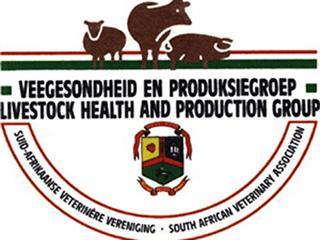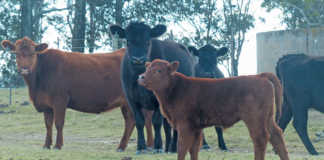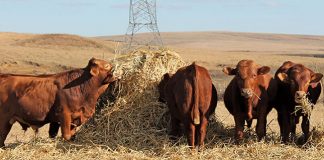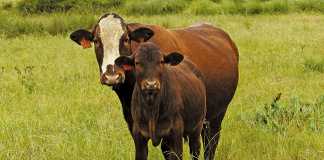
As a result of the drought there was hardly any grazing and slangkop, an extremely toxic plant, sprouted and caused mortalities when eaten.
- Internal parasites. It’s wireworm season and reports were received of small-stock dying. Know the clinical signs of verminosis: anaemia, bottle jaw, diarrhoea and emaciation. Take dung samples to your vet and weigh the animals regularly to see if they’re picking up weight.
After each treatment, make sure the anthelmintic employed has worked, using the 5-point check. Consult with your vet on how to use this management programme.
- External parasites. In many areas there was a tick explosion, leading to reports of tick-borne diseases, such as African and Asiatic red water, anaplasmosis and heartwater. There are vaccines against all of these diseases; your vet will be able to tell you how to use them.
- Insect transmitted diseases. There were outbreaks of lumpy skin disease and three day stiff sickness. Hopefully, farmers have already vaccinated their animals against these, as well as Rift Valley fever, Wesselsbron, blue tongue and African horse sickness.
- Venereal diseases. It is of grave concern that trichomonosis, vibriosis and brucellosis are still spreading. Strict biosecurity measures should always be followed together with testing of bulls, pregnancy examinations, culling of animals and immunisation.
- Bacterial/viral diseases. There were outbreaks of blackquarter, swelled head, red and blood gut, pulpy kidney, botulism, tetanus, E. coli , salmonellosis, respiratory diseases, diarrhoea, abscesses and opthalmia.
The biggest threat to farmers is not following a proper immunisation program. It’s often reported that animals were not vaccinated. How many, for example, still vaccinate their animals with anthrax and Brucella vaccines?
Snotsiekte outbreaks are on the increase and drastic steps should be taken to curb this deadly disease. Good neighbourliness and strict biosecurity measures should always be in place.
An outbreak of corridor disease was reported where cattle and buffalo were in contact and 30 out of 300 animals died.
- Poisonings. Too many mortalities are reported each month due to urea poisoning. In one case a loss of R400 000 was recorded. Other poisonings recorded involved tulip, krulblaartulp, gifblaar, gousiekte, Lantana, ink berry, slangkop, Cynanchum, rye grass, prussic acid, acidosis, organophosphate, organochlorine, fogfever, photosensitivity, salt and copper.
View the Livestock Disease Trends Map in your region
In one case long weaners drank from a dam contaminated by algae (Mycrocystis toxica); 34 animals died.
Feedlot Report
Sheep feedlots
Health of sheep was generally been good, with fewer cases of pneumonia. However, after the wet weather, more cases of foot rot were seen, as well as wireworm infection in new intake sheep.
Lung damage was caused due to variable weather conditions. In many cases sub-clinical acidosis was present in cattle.













